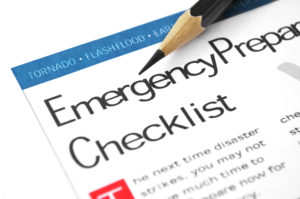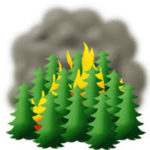
California’s Wildfire Challenge: Safeguarding Homes
How Can I Protect My Home from California Wildfires? A crucial aspect of safeguarding a home from wildfire involves focusing on the defensible space surrounding it by mastering the Home Ignition Zone. The Home Ignition Zone spans from the exterior walls of your house to five feet beyond the building, it’s where embers can accumulate and pose a significant risk of ignition. To fortify your property against wildfires, follow these key fire mitigation guidelines: Vegetation Management Ensure that no vegetation, including trees, shrubs, bushes, plants, grass, and weeds, are present within the Home Ignition Zone. Remove any overhanging limbs or branches from nearby trees or bushes. While ideally having no vegetation in this area is best, consider incorporating limited use of wildfire-resistant plants to minimize risk. Noncombustible Hardscaping Surround your home with noncombustible hardscape materials like concrete, gravel, or paving stones instead of flammable mulch, and consider creating firebreaks to prevent the rapid spread of fire. Keep this area clear of debris to reduce fire hazards. While bare soil is also considered noncombustible, it may require more maintenance to prevent weed and grass growth. Remove Combustible Items Eliminate combustible objects such as wooden and plastic furniture, firewood, and trash cans from the Home Ignition Zone. These items can act as fuel sources for wildfires and increase the vulnerability of your home. Vehicle Placement Park boats, RVs, trailers, or any other vehicles away from the immediate vicinity of your home. Placing them elsewhere can reduce the potential fire risk they pose. Noncombustible Structures Consider replacing combustible pergolas, gazebos, curtains, drapes, or screens with noncombustible alternatives made of metal. This substitution further bolsters your property’s resistance to ignition. Harden Your Home Retrofitting your home with fire-resistant materials is a crucial step in minimizing the potential damage from wildfires. The use of fire-resistant roofing, siding, fencing, and windows can significantly increase the chances of your home surviving a nearby wildfire. Securing Your Vents During a wildfire, flying embers pose a significant threat to your home’s safety. Embers can find their way into your living spaces through vents in the attic, roof, gables, and crawlspace. Ensure that all vents are equipped with a metal screen with a mesh size of 1/8 inch or finer. This screen acts as a barrier, preventing embers from infiltrating and potentially igniting your home. Periodically inspect and maintain the vent screens. Remove any accumulated debris, bird nests, or other obstructions that could compromise their effectiveness. Install Fire Suppression Systems Consider investing in fire sprinklers and fire suppression systems for your home. These systems can help contain a fire before it engulfs your property entirely. Stay Informed and Prepared Keep yourself up to date with the latest wildfire alerts and evacuation orders in your area. Create an emergency plan with your family, and practice evacuation drills to ensure everyone knows what to do in case of a wildfire threat. Additionally, fostering community collaboration can create a network of support that helps protect entire neighborhoods from the devastating impacts of wildfires. As California faces its wildfire challenge, we want to ensure homeowners are empowered to rise to the occasion and protect what matters most – their homes and loved ones. Contact us today at Coast to Canyon Insurance to see how we can help.






